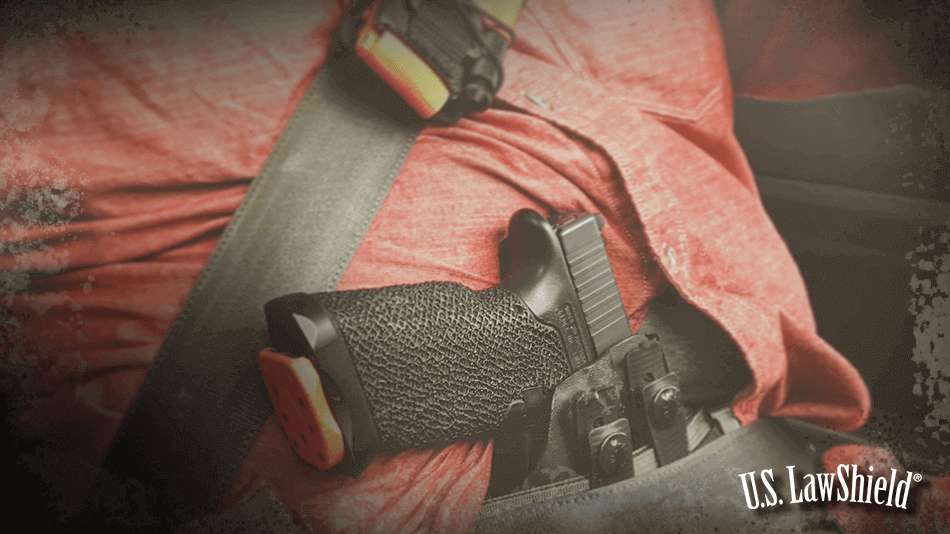
Online conversations regarding concealed carry positions for a concealed carry weapon (CCW) oftentimes devolve into the worst sorts of arguments, with people on one side arguing that their preferred concealed carry positions are far superior to the people on the other side’s preferred concealed carry positions. The fact of the matter is that concealed carry is much more nuanced than a black and white argument can ever fully capture. All the concealed carry positions in existence have pros and cons. While it’s true that some carry methods have many strengths and few weaknesses, or vice versa, that doesn’t negate the fact that there might be legitimate reasons or circumstances to choose any of them for concealed carry.
Understanding Handgun Concealed Carry Positions and Their Terminology
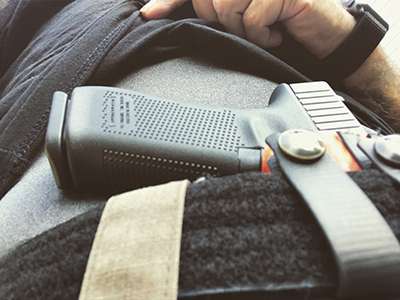 There needs to be a shared concealed carry language before a discussion regarding any of the concealed carry positions can truly take place. The first thing to understand, is that one of the things you’ll often hear referenced when handgun carry positions are discussed is a clock position or o’clock position. This is represented as 12 o’clock position, 3 o’clock position, 6 o’clock position, etc. The use of o’clock positions indicates where on an individual’s waistline a handgunholster is placed with the 12 o’clock position representing the front of the body along the centerline, 3 o’clock position representing the right side of the body along the outside of the hip, and 6 o’clock positionrepresenting the back of the body along the spine. While we used common examples of where people place handgun concealed carry holsters, understand that in this way you can describe any location on a person’s belt or waist that they might carry a pistol, using an analog clock face as a reference.
There needs to be a shared concealed carry language before a discussion regarding any of the concealed carry positions can truly take place. The first thing to understand, is that one of the things you’ll often hear referenced when handgun carry positions are discussed is a clock position or o’clock position. This is represented as 12 o’clock position, 3 o’clock position, 6 o’clock position, etc. The use of o’clock positions indicates where on an individual’s waistline a handgunholster is placed with the 12 o’clock position representing the front of the body along the centerline, 3 o’clock position representing the right side of the body along the outside of the hip, and 6 o’clock positionrepresenting the back of the body along the spine. While we used common examples of where people place handgun concealed carry holsters, understand that in this way you can describe any location on a person’s belt or waist that they might carry a pistol, using an analog clock face as a reference.
Another thing that you’ll often see discussed is outside the waistband (OWB) and inside the waistband (IWB) holsters. This is simply a reference to where the body or shell of the holster ends up once worn. As their name indicates, IWB holsters are designed to be worn attached to a belt inside the waistband of someone’s clothing. OWB holsters on the other hand, are designed to be worn attached to the belt outside the waistband of someone’s clothing.
You’ll also likely hear people talking about different conceal carry positions, such as strong side carry,appendix carry, pocket carry, off-the-body carry, and others. Strong side carry is when the holster is worn on attached to a belt on the dominant side, which for a right-handed shooter would be anywhere from the 3-5 o’clock positions. Appendix carry or as it’s also called AIWB (Appendix Inside the Waistband) simply refers to a holster that’s attached to a belt and worn anywhere between the 10-2 o’clock positions. Pocket carryindicates a holster carried in a pants or coat pocket instead of attached to a belt. While off-the-body carry indicates a holster worn in a bag of some sort that’s carried, rather than placed directly on a person’s body. While belts are generally a good idea if you plan on carrying a pistol using one of the popular concealed carry positions, there are certain carry methods that forgo belts entirely and still keep a pistol concealed.
Popular Concealed Carry Positions and Body Types
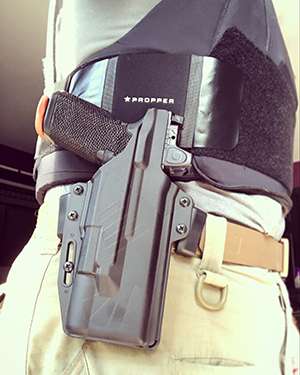 Someone’s body type can certainly impact which of the concealed carry positions is optimal for concealment, but there’s not a hard and fast concealment rule that says someone must carry a certain way if they fall into certain body types. For instance, there are often absolute statements made regarding appendix carry along the lines that “it only works for thinner people” or “bigger people can’t appendix carry comfortably or keep handguns concealed that way.” However, the reality is that there are multiple larger people who’ve found a way to select appendix carry as their primary carry method and make it work well for them.
Someone’s body type can certainly impact which of the concealed carry positions is optimal for concealment, but there’s not a hard and fast concealment rule that says someone must carry a certain way if they fall into certain body types. For instance, there are often absolute statements made regarding appendix carry along the lines that “it only works for thinner people” or “bigger people can’t appendix carry comfortably or keep handguns concealed that way.” However, the reality is that there are multiple larger people who’ve found a way to select appendix carry as their primary carry method and make it work well for them.
The closest thing to an absolute statement that can be made regarding concealed carry positions and body types is that at a certain point there can be such a thing as too large of a gun for the position someone is trying to carry it. This is highly subjective however, and there’s no absolute way to know for sure what might work for one person but not another. Online reviews or testimonials may help you decide which is best for you, but keep in mind that reviews are only as good as the experience level of the person writing them. Also keep in mind that someone may be excellent at shooting, but not know much about concealment or how certain CCW positions will work with certain body types.
Enjoying this content? Find out how you can get more sent straight to your inbox.
Which Concealed Carry Position Should I Use?
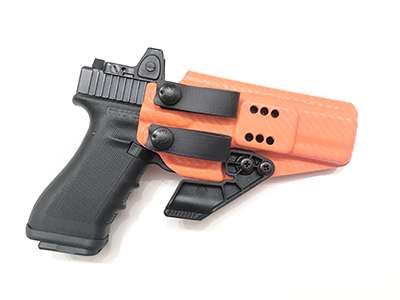 The carry method you select should be individually tailored to your specific situation. Everything from body types, level of training, mode of dress, level of concealment required, or even occupation can affect someone’s decision making process regarding where they choose to carry. A person that spends all day in a suit is likely to have different priorities and requirements than a person who lives in jeans and a t-shirt.
The carry method you select should be individually tailored to your specific situation. Everything from body types, level of training, mode of dress, level of concealment required, or even occupation can affect someone’s decision making process regarding where they choose to carry. A person that spends all day in a suit is likely to have different priorities and requirements than a person who lives in jeans and a t-shirt.
When selecting a carry method, make sure that you’re considering your situation fully.
If you decide to research the topic on your own, look for professionals who have experience carrying a firearm in an environment that’s similar to the one that you’re most likely to find yourself. Someone whose primary experience involves carrying a rifle and deploying pistols from drop leg holsters may not have advice that’s relevant to your situation. Again, there are no absolutes, and what works for one person may not work for you.
What Carry Position Is Safest?
Opinions differ on which carry method is actually safest, and the fact remains that no matter which carry method you select there’s always the risk of an accident if a mistake is made.
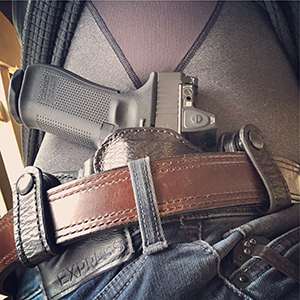 There are some people who think that appendix carry is the safest carry method because it allows someone to maintain visual awareness on the muzzle of the gun and the mouth of the holster during the holstering procedure. Other people think appendix carry is horribly dangerous because any injury that occurs if the gun fires accidentally has the potential to be severe.
There are some people who think that appendix carry is the safest carry method because it allows someone to maintain visual awareness on the muzzle of the gun and the mouth of the holster during the holstering procedure. Other people think appendix carry is horribly dangerous because any injury that occurs if the gun fires accidentally has the potential to be severe.
You can find other people who think strong side carry is the safest, because if the gun fires accidentally it’s less likely to strike anything vital. The counterargument is that because people are less likely to maintain visual awareness of an object placed behind their hip, it becomes easier to make a mistake, and the severity of the injury can be just as high when you factor further human error into the equation.
Every carry method will have its proponents and detractors when it comes to safety. At the end of the day, it’s the end user’s responsibility to do their own research to identify all the risks associated with any of the concealed carry positions, and the best practices for mitigating those risks.
What Is the Best Concealed Carry Holster for Popular Concealed Carry Handguns?
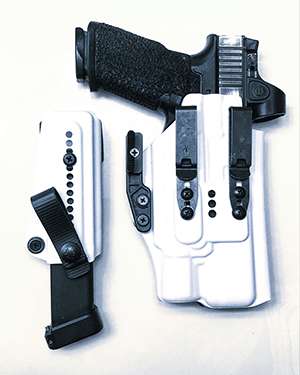 There’s no objective measure that can identify what the best concealed carry holster is for one person. There are many excellent options available for almost all the popular concealed carry positions. If the holster you select retains the weapon you plan on carrying, protects the trigger, and is well designed for the concealed carry position you’ve selected, it’ll probably serve you well. If you’ve questions regarding a holster and whether it’ll be something that works well for your specific situation, seek out a qualified professional. Make sure they have relevant experience in the situation you plan on carrying and ask what they think. Most are very approachable and happy to help!
There’s no objective measure that can identify what the best concealed carry holster is for one person. There are many excellent options available for almost all the popular concealed carry positions. If the holster you select retains the weapon you plan on carrying, protects the trigger, and is well designed for the concealed carry position you’ve selected, it’ll probably serve you well. If you’ve questions regarding a holster and whether it’ll be something that works well for your specific situation, seek out a qualified professional. Make sure they have relevant experience in the situation you plan on carrying and ask what they think. Most are very approachable and happy to help!
What Are the Worst Carrying Positions?
Every single one of the popular concealed carry positions has a set of circumstances where they may not be an ideal choice. While there are certainly some choices that have more drawbacks than others, it’s impossible to make an objective statement that one is worse than all the others. Educate yourself on the strengths and weaknesses of each carry method, and then select the one that best suits your needs while providing the fewest number of drawbacks.
Concealed Carry Positions FAQ’s
Your Protection Starts Here!
The information provided in this publication is intended to provide general information to individuals and is not legal advice. The information included in this publication may not be quoted or referred to in any other publication without the prior written consent of U.S. LawShield, to be given or withheld at our discretion. The information is not a substitute for, and does not replace the advice or representation of a licensed attorney. We strive to ensure the information included in this publication is accurate and current, however, no claim is made to the accuracy of the information and we are not responsible for any consequences that may result from the use of information in this publication. The use of this publication does not create an attorney-client relationship between U.S. LawShield, any independent program attorney, and any individual.

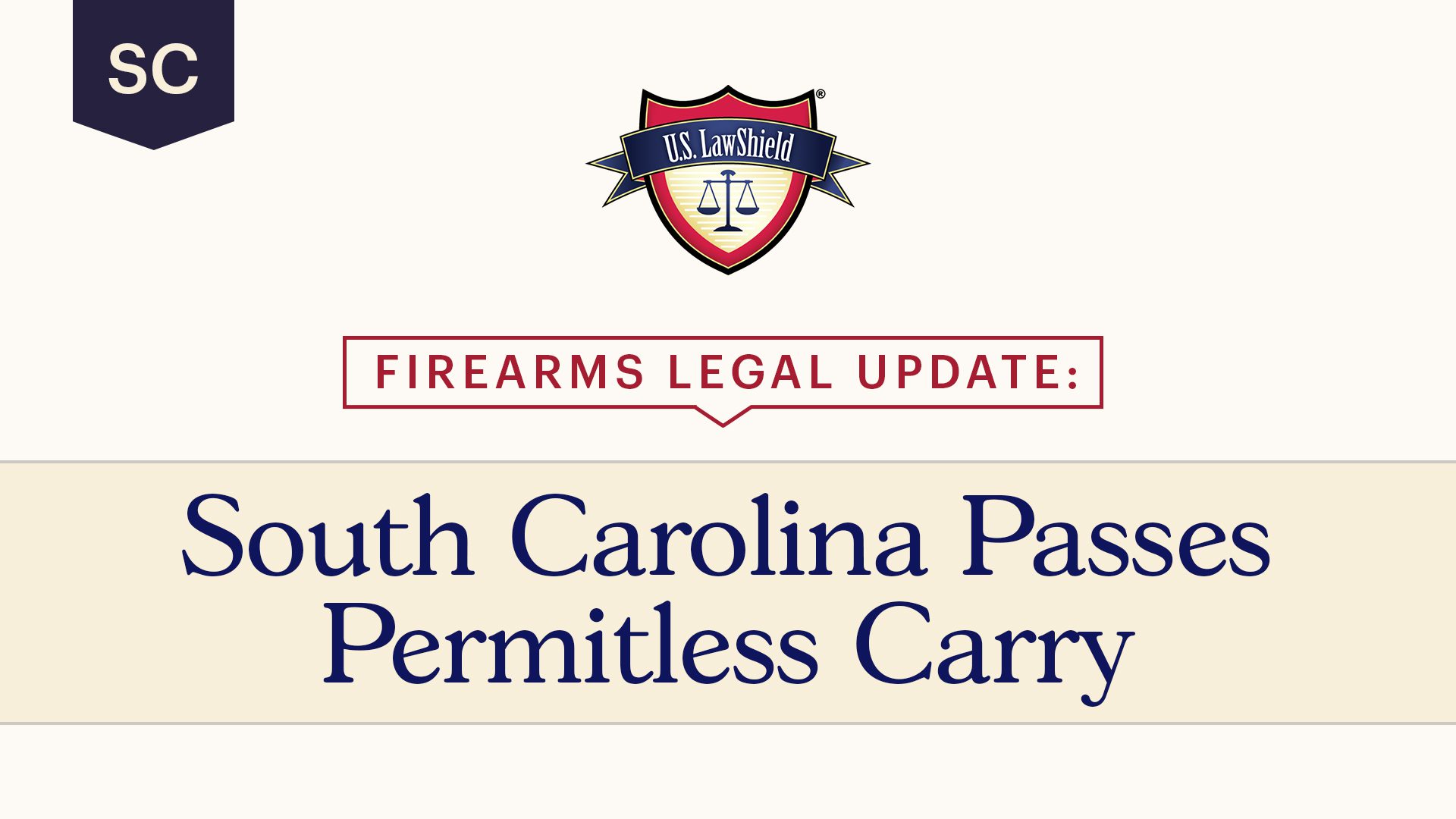
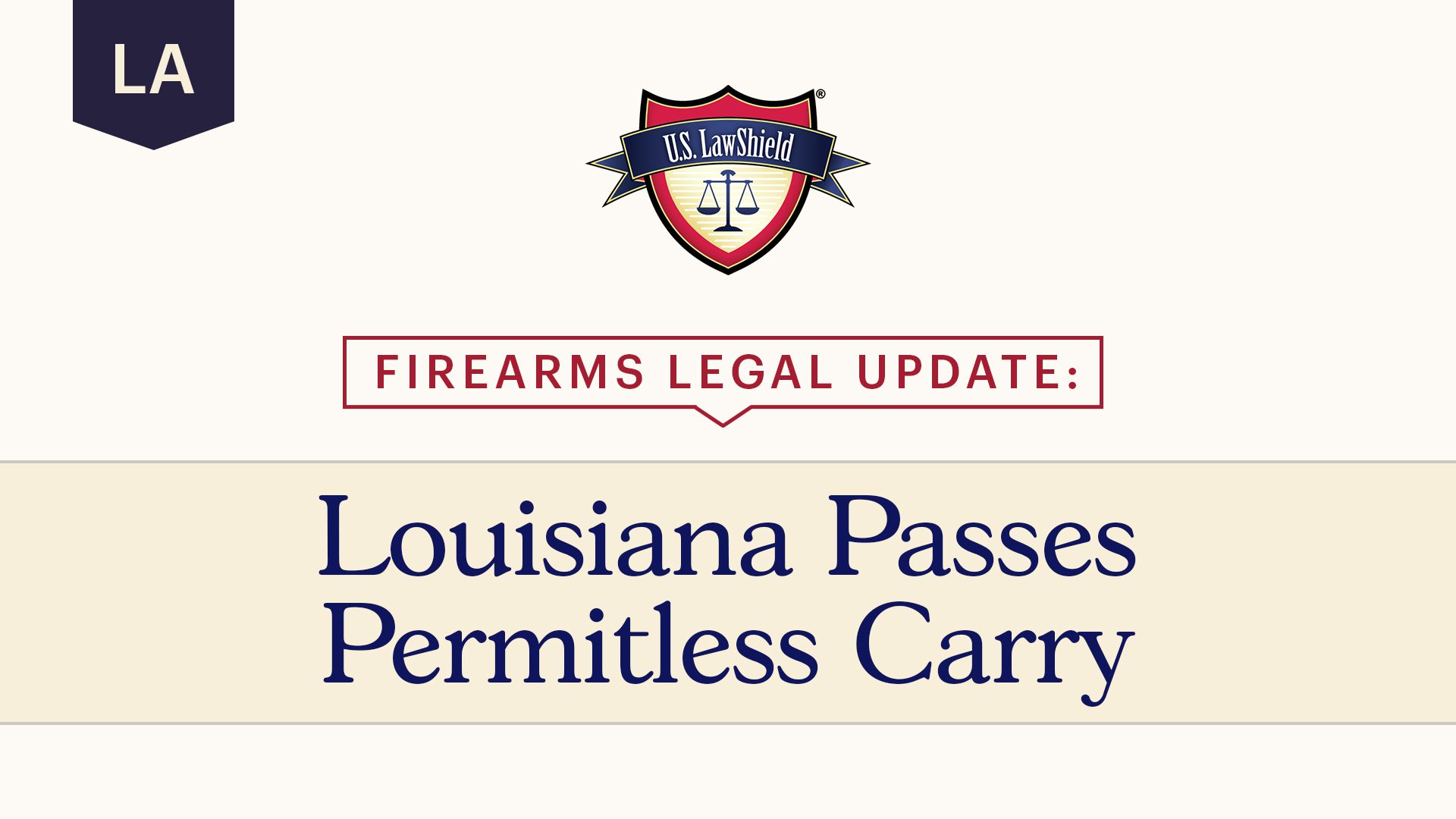
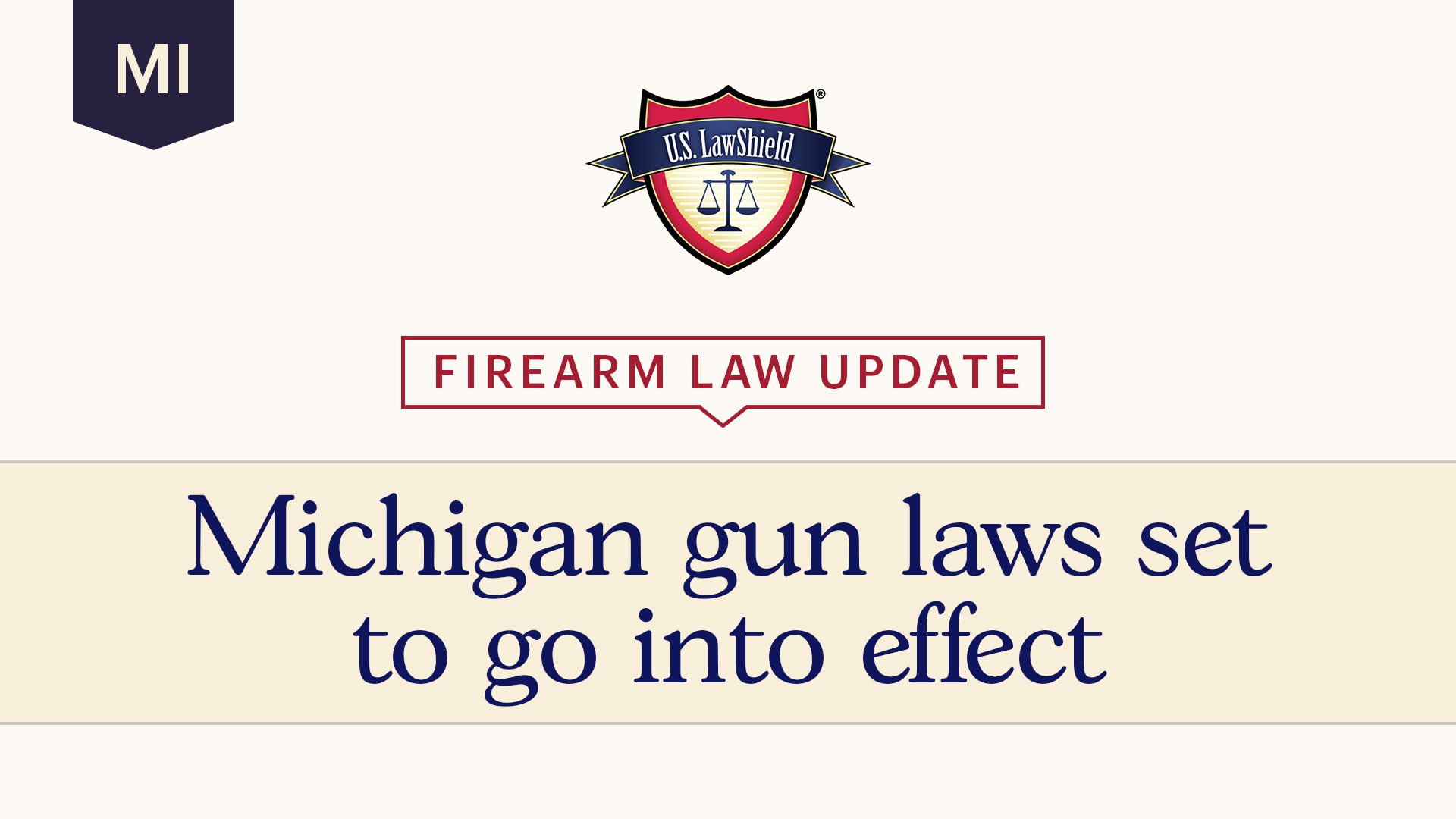

Leave A Comment